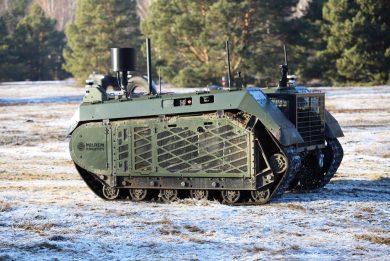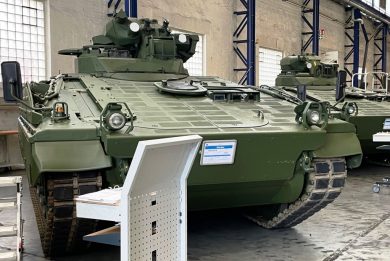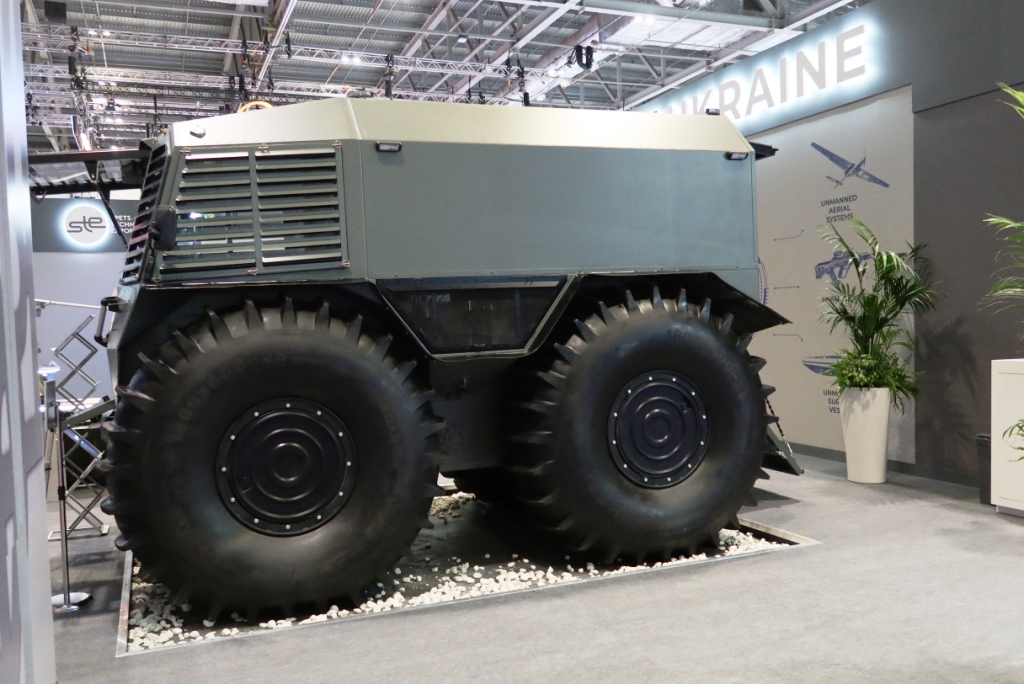
DSEI 2023 – Ukraine’s underlined the resilience of its defence industry while looking for mass producers
The presence of a stand where a number of systems were exhibited by Ukraine’s defence industry showed well the will of that country to continue existing, notwithstanding the dramatic military confrontation ongoing along its borders since February 24th, 2022
EDR On-Line editorial team wants to dedicate the last article of the DSEI round-up to a very specific stand, that of Ukraine’s defence industry. Not many countries of that dimension would have the will to exhibit their defence products, many of which we are sure are coming from the needs of the national armed forces, which not only are getting weapon systems thanks to international support but are also relying on what the remaining production capability of the national defence industry is able to provide. And as we say, necessity sharpens the ingenuity. Beside showing its resilience, Ukraine, the possible aim of the presence of the national industries was also probably to explore the availability of western industrial entities to mass produce Ukrainian-designed defence systems that are badly needed on the frontline, systems that should definitely be more affordable than western designs.
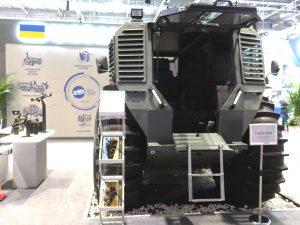
Dominating the stand was the Tahal LLC Taha 1200, the last number being that of the payload n kilograms, the vehicle being based on the Sherp all-terrain vehicle. What catches immediately the eye is the pneumatics dimension; the vehicle is fitted with Unique 1800x600x25 tubeless ultra-low pressure tires based on a patented wheel design has several advantages: according to Tahal LLC their elasticity reduces the risk of damages, they can be inflated with exhaust gas simply touching a button, and their thread not only provides traction on difficult ground but also it allows the vehicle to float and move on water at 6 km/h. Remembering mobility issues related to conventional wheeled combat vehicles in the muddy Ukrainian planes, it is clear that Taha vehicles aim to overcome that problem, ground pressure being between 0.07 and 0.15 kg/cm2. Not the Taha 1200 can overcome a one meter high vertical obstacle, and has an autonomy of 65 hours when using the standard 95 litres tank and four additional fuel tanks capable of 58 litres each. Of course speed was not its design priority; powered by a Doosan D18 3-cylinder diesel engine providing 41 kW (55 hp) than ensures a maximum speed of 40 km/h. The version seen at DSEI had an armoured cabin, access being from the rear; a stair allows to climb in, the chassis has a 600 mm ground clearance, and nine soldiers can find place inside the vehicle. Based on the same concept, but with a more powerful 4-cylinder D24engine other combat and amphibious vehicles are being proposed.
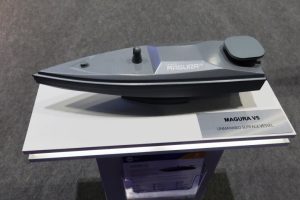
From land to sea, STE (Spets Techno Export) took to DSEI the model of its MAGURA V5, unveiled at IDEF Istanbul exhibition last July. Its name stands for Maritime Autonomous Guard Unmanned Robotic Apparatus, and is characterised by a V-shape hull. its sleek shape, height over waterline is only 500 mm, provides a low RCS, hence the capability to approach the enemy area being seen at the very last moment. The MAGURA V5 is 5.5 metres long and has a beam of 1.5 metres, with a draft of 0.4 metres. It can carry a payload up to 320 kg at a cruise speed of 22 knots, with a dash speed capacity of 42 knots. Propulsion is either electric or hybrid, and the second should be the case when talking of a 450 nautical miles range. A multirole USV by definition, thanks to its carrying capacity, it can be fitted with modules allowing it to cover reconnaissance, mine warfare, rescue and combat missions. The level of autonomy to be integrated will depend very much on the type of mission. Recent events reveal the need for suicide USVs capable to generate huge damages to enemy vessels, and in that case lower cost solutions should be adopted in the form of wireless remote guidance possibly via SATCOM link.
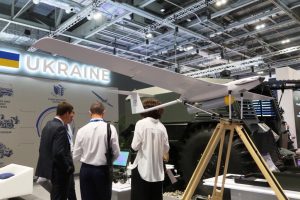
STE also exhibited the Punisher mini-UAV, a 2.25 metres wingspan airframe that can carry a 2.5 kg payload at 45 km distance with a maximum speed of 180 km/h. Designed and produced by UA Dynamics, this UAV has a conventional airframe with front propeller driven by an electric motor powered, it can rearmed in three minutes to be back on scene over the enemy. It is usually armed with a single UB-75HE bomb, a 2.5 kg ordnance with a 75 mm diameter and a length of 550 mm, fitted with an impact fuse. Other versions of that bomb are available such as thermobaric and guided, while an incendiary version is under development. The Punisher is in use by Ukrainian forces.
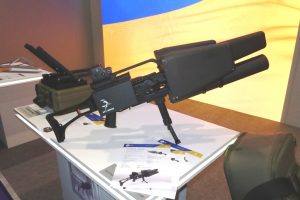
Last but not least came the SkyWiper EDM4S counter-UAS electronic rifle. The system has the typical rifle-like layout of manportable C-UAS, the barrel being replaced by a set of antennas working in four different bands, 900 MHz, 1.5 GHz (GNSS L1), 2.4 GHz and 5.8 GHz. Radio modules on the same frequencies allow jamming most UAS controls, video streams and GNSS, specific frequencies being available on demand. Operated by a single man, the SkyWiper weighs less than 7 kg in operation, is 1.045 metres long, and it can operate one hour continuously.
Photos courtesy P. Valpolini


